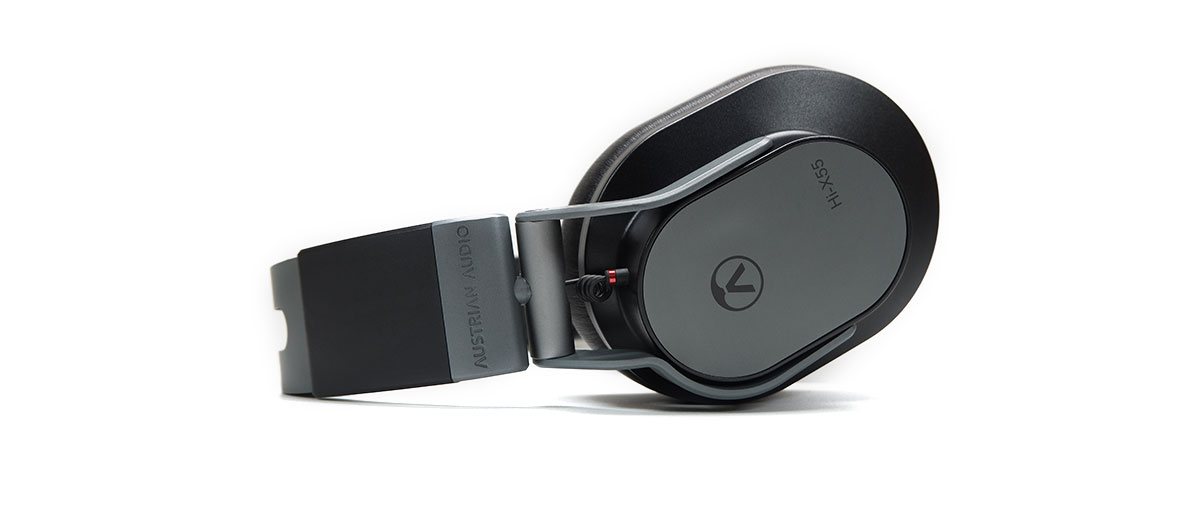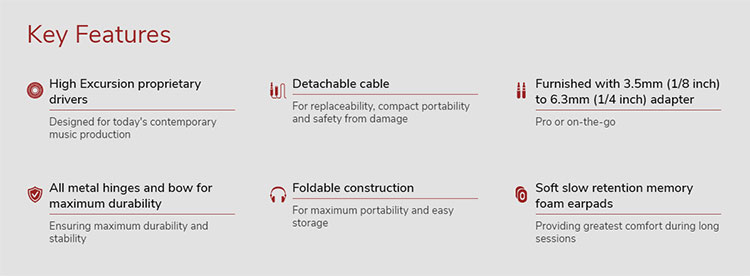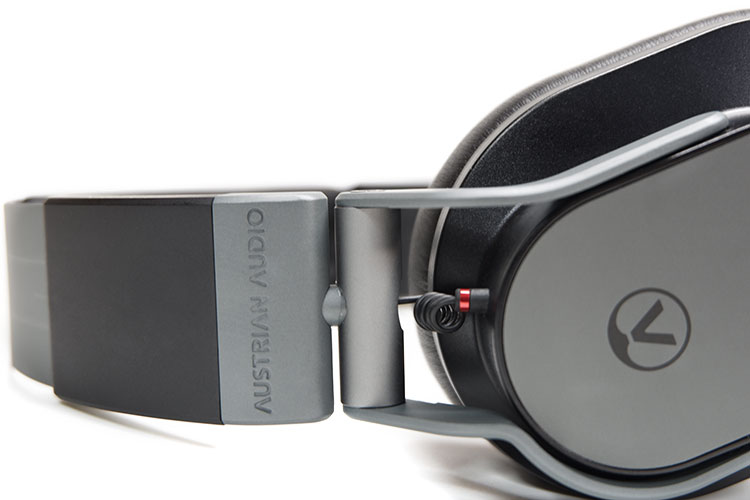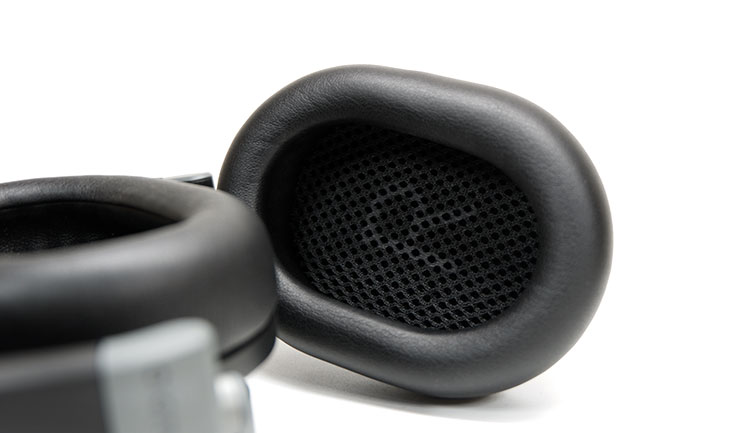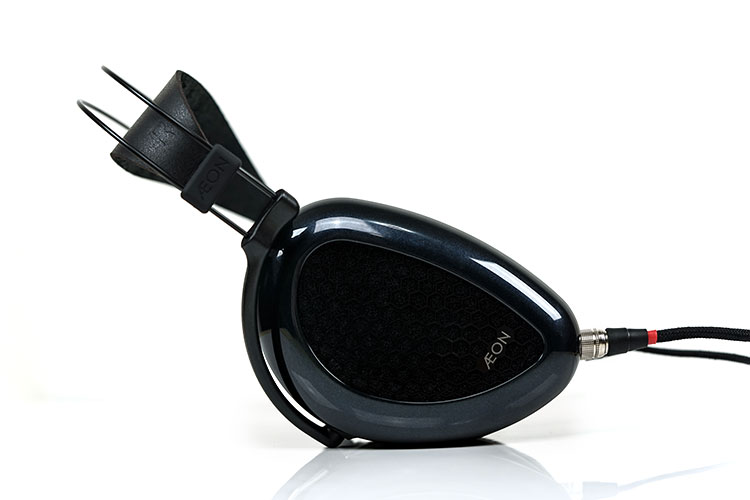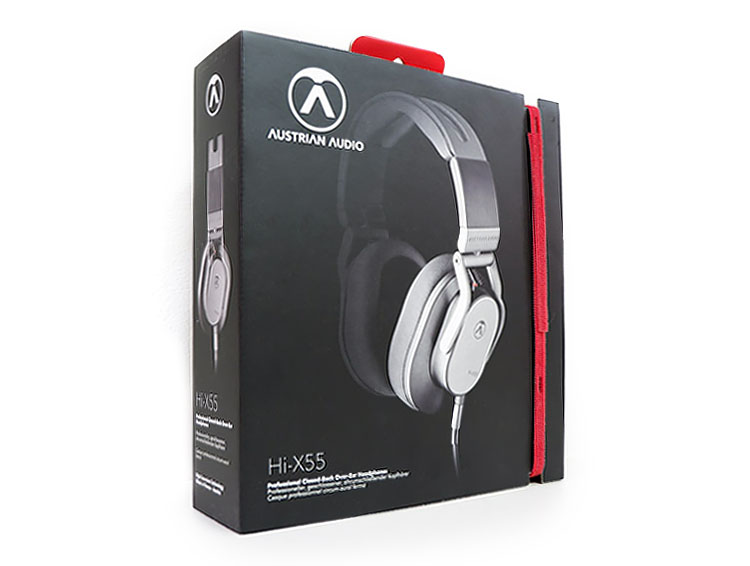The Austrian Audio Hi-X55 is a 44mm dynamic driver circumaural headphone designed for studio monitoring and Made in Austria. It is priced at $329.99
Disclaimer: The Austrian Audio Hi-X55 sent to us is a sample in exchange for our honest opinion in this review. We thank Austrian Audio for this opportunity.
To learn more about headphones reviewed on Headfonics you can click here.
Note, this review follows our new scoring guidelines for 2020 which you can read up on here.
Austrian Audio has its roots in Vienna, Austria, and was founded in 2017. They might seem like a new company, but Austrian Audio was started by 22 former AKG personnel when AKG permanently closed its offices in Vienna.
Since then, the team at Austrian Audio has been producing and developing microphones and headphones designed for studio use.
With their wealth of experience from their work in AKG, the team behind Austrian Audio just hit the ground running. They have produced microphones and 2 headphones, the on-ear Hi-X50, and now the over-ear version Hi-X55.
When I was discussing the review with Austrian Audio’s marketing team, they reminded me that the Hi-X55 is a headphone designed to do mastering and studio work. I think this was to temper my possible expectations, especially in the bass department.
My first impressions do not disappoint, and I’m looking forward to taking an in-depth look at what they have created.
Tech Inside
The Hi-X55 features a proprietary 44m high excursion dynamic driver. The driver size was deliberate on their part because their experience has taught them that 44mm diameter diagrams are optimal in being able to move the largest amount of air while being resistant to ‘wobbling’.
With durability in mind, the Hi-X55 is equipped with quite a few metal parts, especially the parts that are most susceptible to wear and tear. And this includes all the hinges and the bow on the top of the headband.
Design
The Hi-X55 headphone is a single-entry compact circumaural headphone design with a removable 3m cable. The cable is terminated in a 3.5mm TRS connection with a screw-on ¼” adaptor, while the other end has a bayonet lock with a 2.5mm TRS connection.
Since the Hi-X55 has a single entry system, the internal wiring from the left to the right side of the headphone is exposed. The wire is twisted in such a way that it would be difficult to accidentally snag on the wires.
Materials
The headphone is made up of mostly metal parts, especially the moving parts. The bow of the headband uses a metal rail inlay that has grooves that serve as the guide for the adjustment mechanism.
I like how the adjustment mechanism feels sturdy, and overshooting your desired size will not be an issue. Also, when the headphone is on your head, it’s a bit harder to adjust, so accidentally changing the fit of the headphones while wearing them can be avoided.
The Hi-X55 has hinges for folding them for traveling and swiveling the ear cups to get that perfect fit on your head. The hinges on the headphones are smooth and they seem quite sturdy.
It seems that Austrian Audio likes Velcro quite a bit, as they even utilized it with the removable cushion on the top part of the headband. I like that they did Velcro instead of gluing it on though, at least this way it would be easily user-replaceable.
Earpads
The earpads on the Hi-X55 is also user-replaceable. There are 12 clips on the ear cup that hold them firmly in place, but the earpads can easily be replaced by the user. The earpads are made of memory foam, which is soft enough to conform to your head shape.
Overall, the design doesn’t seem to get inspiration from AKG products of the past. Although the build is completely their own, it seems that much thought has been put into how this headphone is built.
Each of the parts that might be prone to wear is user-replaceable, and I wouldn’t be surprised if I saw a Hi-X55 that has been in continued service for years or even a decade or two.
Comfort & Isolation
At first glance, the Hi-X55 looks like it has smaller supraaural ear cups, but the earpads have thin walls so that the inner diameter of the earpads ends up larger than you would expect based on the ear cups making it a compact circumaural.
The earpads are thick and they compress just enough to feel like pillows on the sides of my head. So having the ear pads against the side of my head won’t pose any comfort issues at all. Another added benefit of having thin-walled ear pads is that they won’t feel as hot against the side of my head despite them being made of leather.
When I adjust the headband, I end up adjusting them to around 1 notch from the maximum, which is respectable. The adjustment mechanism is wide enough that it can accommodate a wide variety of head sizes.
Adjusting to any smaller size would give me a hot spot on the top of my head, despite there being some foam mounted on top of the headband.
While the earpads on the Hi-X55 are thin, they still do isolate. And with their closed-back nature, they do create a good passive seal around my ears. They can keep the sound in, and create an immersive sound environment overall.
Packaging & Accessories
The Hi-X55 came in a simple cardboard box with the headphones and some information printed in front. There’s foam inside to protect the headphones, but it isn’t much of a presentation case that we’ve become accustomed to for headphones at this price point.
The box is secured by a red Velcro band, which serves as a good contrast to the predominantly black box. The Velcro band can also be cut up to make some cable ties to be used for cable management. They just didn’t want even the strap to go to waste.
Inside the box are some paperwork, an Austrian Audio sticker, a velvet pouch, and the cable. The accessories might seem simple, but the whole package is just well thought out.
Sound Impressions
Bass
I started testing the sub-bass on the Hi-X55, and I was pleasantly surprised with its response and presence. I listened for the sub-bass rumble at the start of the song Drink Up by Train, and it was there. Although it isn’t overwhelming, it’s evident that there is a good amount of sub-bass presence.
Going up in the frequency spectrum into the mid-bass section, I find that the Hi-X55 performed really well in this portion. I like how there is a good amount of mid-bass impact, and the decay is just spot on to feel like a natural drum hit.
Each drum hit has that punchy quality that keeps it perfectly natural and believable. When I listened to the drum hits from Angels Or Devils by Dishwalla, the drum hits have this hollowed but impactful quality to them that brings me back to when I listen to actual drums being hit.
When I listened to bass guitars, the bass notes were sustained and textured. The Hi-X55 has enough resolving capability to present the timbre qualities of bass guitars and separate them from even guitars that are being strummed with the same note. This is something that I haven’t heard except in more detailed planars.
Generous amounts of bass are easy to come by, but a bass region that has enough quality while still being controlled and punchy is something special. That’s the kind of bass that the Hi-X55 can produce, and it’s really a treat to hear.
Midrange
The vocal range on the Hi-X55 is generally neutral, not emphasized, but not recessed. While not being emphasized, the detail retrieval from the vocal range is still good.
It’s easy for me to find the textures of the vocals from both male and female vocalists. I just get a sense that the Hi-X55 doesn’t need to emphasize the vocal range to clearly present details.
Guitar strums on the Hi-X55 are also presented naturally. When I’m listening to the guitars, I can almost imagine the size of the guitar’s body and the way the guitarists are shifting their fingers through the fretboard.
In the intro of Standing Still by Jewel, it almost sounds like it’s a real guitar in front of me. The timbre of the guitar is similar to how I hear actual guitars when I play or watch my friends play on the acoustic.
The upper midrange of the Hi-X55 is also presented well, giving it an overall neutral presentation. With piano tracks that play in the upper registers like in River Flows in You by Yiruma, the tinkling keys are detailed as ever, but harmonic overtones bleed into the lower treble region.
The Hi-X55 has a great amount of detail retrieval, leaving no need for actually emphasizing any frequency range.
Treble
If there is anything that I would improve on with the Hi-X55, is the way it presents the lower treble range.
When I listen to the piano like in Yiruma’s River Flows in You, I seem to be able to hear harmonic overtones a bit too much. They seem slightly boosted, giving me a sense of the airiness, but at the same time end up feeling a bit bright on some tracks. It probably becomes more noticeable on tracks that are recorded using pianos that are innately brighter.
Cymbal hits are the star of the show in the Hi-X55’s treble response. When I listened to the cymbal rolls from Hands Down by Dashboard Confessional, I was impressed at how detailed each hit sounded. Despite this being successive and fast, the hits are presented with finesse, while the transients and overtones still linger underneath.
Overall, the treble is highly resolving, and the Hi-X55 can present even the most minute changes from the tones of the instrument played in the track.
Staging
The Hi-X55 is a pair of closed-back headphones, and this would normally mean that the soundstage will be closed in. That’s what I expected, but again the Hi-X55 has exceeded those expectations.
The width of the soundstage on the Hi-X55 is pretty good, and it ends up having a sound stage similar in size to an intimate open-backed headphone like the HD600 just less airy and open.
Listening to Spanish Harlem by Rebecca Pidgeon, I can clearly hear the way her voice echoes around the room and I can almost imagine the size of the room.
The shaker that’s positioned further to the right really felt that it’s on the far right, while still having a vivid quality to it. There were even some micro details that I could only hear with the Hi-X55 on that track.
Synergy
According to the specs sheet, the Hi-X55 has an SPL of 118dB/mW and an average impedance of 25Ω. These specs tell me that this will be easy to drive, and that may be true. They can be driven to blaring loud levels even through my Nokia 7.2, but then my phone simply makes the Hi-X55 sound grainy and compressed.
I tried them with the single-ended output of the Schiit Magnius, which is known to have some issues with the single-ended output, and indeed the Hi-X55 revealed the shortcomings of the single-ended output of the Magnius. It exposes any of the flaws in your system, so feeding them through a good-quality DAC and a smoother amp is an absolute necessity.
With the gear available to me, I found that the Hi-X55 sounded best with my Chord 2Qute and the Topping L30 amp. The DAC and amp combination ended up being smooth enough that the Hi-X55 couldn’t reveal any harshness from the source.
I was also happy with how it sounds with my Hiby R3 Pro. However, I needed to almost max out my R3 Pro for the Hi-X55 to sound its best. In general, the Hi-X55 will need a nice detailed source to make it sound its best.
Listening to the Hi-X55 through lesser sources will just reveal the weakness of your source chain, as the Hi-X55 will be indiscriminate in which details it will let you hear.
Select Comparisons
Sony MDR-7506
Technical
The Sony MDR-7506 has been a well-respected studio reference headphone since its release in 1991. It says “studio monitoring” on the top of the headband, so there’s no doubt that it was designed to be used as a studio monitor as well.
I have to admit though that I have enjoyed using it as a headphone for just listening to music for a few years now.
The packaging on the 2 headphones is pretty similar because they’re both built for the same purpose. They both even come with a soft pouch to put your headphones inside.
With how the headphones look though, it’s obvious that Austrian Audio has built-in some more modern conveniences into the design of the Hi-X55. Though they’re both terminated with a 3.5mm TRS connection with a screw-on ¼” jack, the Hi-X55’s cable is straight and not the curly telephone wire type of cable
The cable on the Hi-X55 is also user-replaceable, so getting a replacement cable or a shorter cable for mobile use is also an option on their website. The internal wiring on the 7506 though seems a bit more prone to getting snagged, unlike the Hi-X55’s more tucked-in wiring approach.
The earpads on both headphones are user-replaceable, but the one on the Hi-X55 is just a lot more comfortable. The Hi-X55’s earpads are just thicker and have a larger cavity despite the 2 headphones having about the same-sized ear cups.
The 7506 in comparison is closer to an on-ear design, rather than an over-ear design. Comfort is also in favor of the Hi-X55 because of the softer memory foam that conforms to your head shape.
Performance
Since both headphones are designed for studio use, they have similar tonality. There are just 2 main differences, and it’s that the Hi-X55 has a bit more sub-bass rumble to speak of and that the Hi-X55 has a slight treble peak.
While they may sound similar, it’s just a lot easier to pick out micro details with the Hi-X55. The soundstage on the Hi-X55 is just slightly wider, while the image being cast by the Hi-X55 is quite a bit more accurate.
While the two headphones are both designed for studio use, the Hi-X55 has some features that would end up making it more useful for on-the-go or even home use. It’s evident that both headphones are for studio use, but the Hi-X55 is clearly the superior technical performer of the two.
Dan Clark Audio AEON Closed RT
I bought the original Mr. Speakers AEON Closed a few years back, and I found it too neutral for my tastes. So when I heard that Dan Clark Audio released a ReTuned edition, which boosted the mid-bass frequencies by around 3dB, I gave it a try. I’m happy with how it sounds since it took everything I liked about the original and just boosted the mid-bass.
Technical
When I look at the AEON and the Hi-X55, I find that they are 2 different headphones for different purposes. The Aeon was designed to look pretty, while the Hi-X55 seems to be designed as a tool.
While the AEON seems sturdy enough for when I’d be using it on my desk, I would be more confident in the robustness of the predominantly metal frame of the Hi-X55.
Fit and comfort are about the same on both, and their ear pads are equally comfortable. The top of the headband of the Hi-X55 might be less comfortable on bigger heads though when being compared to the AEON Closed nitinol headband.
One thing to note about the Hi-X55’s single-entry system would be that it’s harder to re-terminate to a balanced connection. While the AEONs have a removable Hirose connector that can easily be replaced with 3rd party cables.
Performance
Planar magnetic headphones typically have a lot of advantages when it comes to speed when compared to their dynamic driver counterparts. But when I started listening to the two headphones, I was pleasantly surprised to find that the Hi-X55 can catch up to the AEON’s speed.
The AEON can reach a bit lower than the Hi-X55, but the tonality on the two headphones is similar down to the slightly lower treble peak. The treble peak might be a 1 or 2dB loss on the AEON though.
Soundstage width is similar on the two headphones, but image accuracy is just a hair more finite on the AEON.
I was surprised that the two headphones sound so similar, but the Hi-X55 just felt more natural in the way it presents the decays in percussive hits. I can say that both headphones have their own strengths, but I’m impressed at how the Hi-X55 overcame the perceived weaknesses of a dynamic driver design and caught up with a planar driver’s speed.
Our Verdict
When the marketing team at Austrian Audio mentioned that this headphone was designed for studio use, I was afraid that it might not sound fun. The Hi-X55 might mean business in a lot of aspects, but it still hasn’t forgotten how to have fun when it comes to presenting a natural and smooth bass response.
The design has a utilitarian feel to it, and a lot of practical considerations had to be made to ensure durability. Despite this, the Hi-X55 was embellished with some plastic parts to smooth down the edges and make it seem elegant despite being so robust.
While I don’t quite see how the Hi-X55 has roots in previous AKG products that I’ve seen, the team’s experience seeps through the design, tuning, and refinement.
Despite being designed by a relatively new company, the Hi-X55 is a very mature product that shouldn’t just be confined to the studio. Plenty of regular audiophiles will enjoy this also.
Austrian Audio Hi-X55 Specifications
- Frequency range: 5 Hz – 28 kHz
- Sensitivity: 118dBspl/V
- THD (@ 1kHz): < 0.1%
- Impedance: 25 Ω
- Input Power: 150 mW
- Cable (detachable): 3m
- Connector: 5mm (1/8”)
- Adapter (included): 5mm to 6.3mm (1/8” to 1/4″)
- Weight (without cable): 305g




